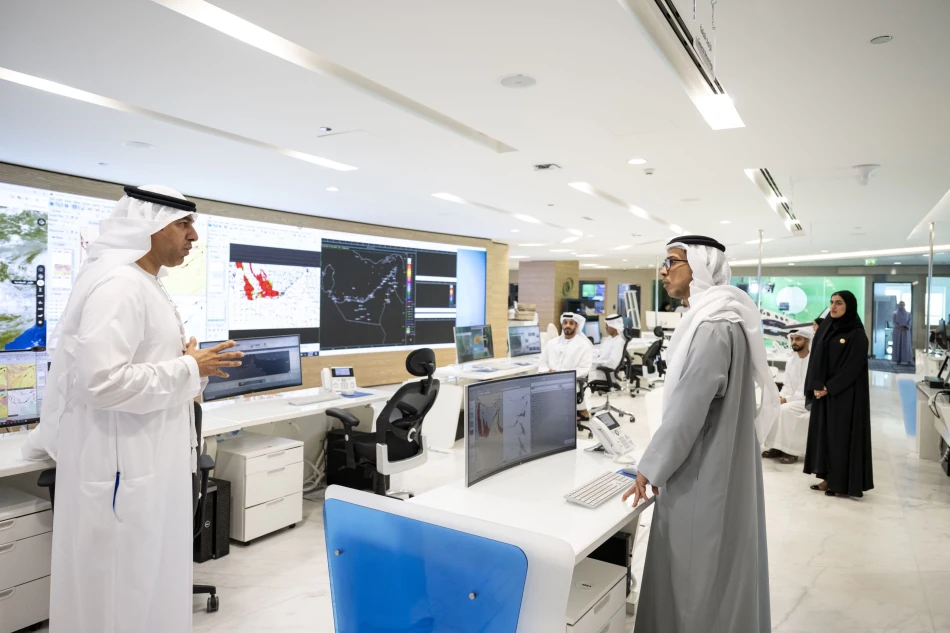
Sheikh Mansour Visits UAE's National Meteorological Center, Explores Advanced Projects and Technologies
UAE Deputy President Inspects Advanced Weather Center as Climate Tech Takes Center Stage
Sheikh Mansour bin Zayed Al Nahyan's comprehensive tour of the UAE's National Center of Meteorology reveals the country's ambitious push to become a regional leader in climate technology and weather prediction capabilities. The high-level visit underscores how Gulf nations are positioning advanced meteorological infrastructure as both a national security priority and economic diversification strategy.
Cutting-Edge Infrastructure Drives Regional Leadership
During his inspection, Sheikh Mansour—who serves as UAE Deputy President and Deputy Prime Minister—examined the center's sophisticated operations spanning weather forecasting, cloud seeding systems, marine monitoring, and specialized renewable energy predictions. The facility houses one of the region's most advanced supercomputers dedicated to climate data analysis, representing a significant technological leap for Middle Eastern meteorological capabilities.
Dr. Abdullah Al Mandous, the center's Director General who also heads the World Meteorological Organization, guided the tour through various specialized units. This dual role positions the UAE at the intersection of national climate strategy and global weather coordination—a strategic advantage as climate events increasingly cross borders.
Antarctic Research Signals Global Ambitions
The center's involvement in international Antarctic research projects demonstrates the UAE's evolution from regional weather monitoring to global climate science participation. This mirrors similar moves by Singapore and other small nations that have leveraged specialized expertise to punch above their weight in international scientific communities.
Digital Platforms Transform Public Safety Approach
The visit highlighted the center's comprehensive digital ecosystem, including real-time weather applications, interactive mapping systems, and direct notification services during extreme weather events. These platforms represent a shift toward proactive rather than reactive climate management—a model increasingly adopted by forward-thinking governments worldwide.
Particularly noteworthy is the "Early Warning for All" platform, developed in collaboration with the Foreign Ministry to provide immediate weather alerts to UAE citizens abroad. This innovation addresses a gap that traditional diplomatic services struggle to fill, potentially setting a precedent for how nations protect their overseas populations from climate-related risks.
Economic Implications Beyond Weather Prediction
The center's renewable energy forecasting capabilities align directly with the UAE's broader economic transformation strategy. Accurate weather prediction is crucial for solar and wind energy optimization, making meteorological expertise a cornerstone of the country's post-oil economy planning.
The facility's educational dome, designed to promote climate awareness among students and the general public, reflects a long-term human capital investment. This approach echoes successful models in countries like Denmark and the Netherlands, where early climate education has supported robust green technology sectors.
Regional Competition and Collaboration
The UAE's meteorological advancement occurs within a broader Gulf context where neighboring countries are similarly investing in climate technology. Saudi Arabia's NEOM project and Qatar's World Cup climate innovations demonstrate how weather management has become a key differentiator for regional powers.
However, the UAE's approach appears more focused on building institutional expertise and international partnerships rather than pursuing megaprojects alone. The center's active participation in global initiatives positions the country as a climate technology hub rather than merely a consumer of foreign expertise.
Strategic Timing Amid Climate Urgency
This high-profile visit comes as extreme weather events increasingly affect Gulf economies and populations. The region's vulnerability to heat waves, flooding, and dust storms makes advanced weather prediction both an economic necessity and a matter of public safety.
The emphasis on proactive preparedness and anticipatory culture mentioned during the visit suggests the UAE is moving beyond traditional disaster response toward comprehensive climate adaptation. This shift reflects lessons learned from recent extreme weather events across the Middle East and represents a mature approach to climate risk management.
For international observers, the UAE's investment in meteorological infrastructure signals how smaller nations can leverage specialized expertise to maintain relevance in global climate discussions while building practical capabilities that serve both domestic needs and regional leadership ambitions.
 Sara Khaled
Sara Khaled







